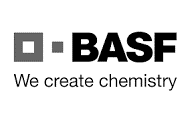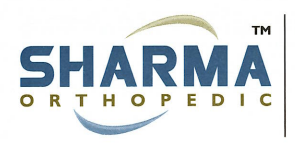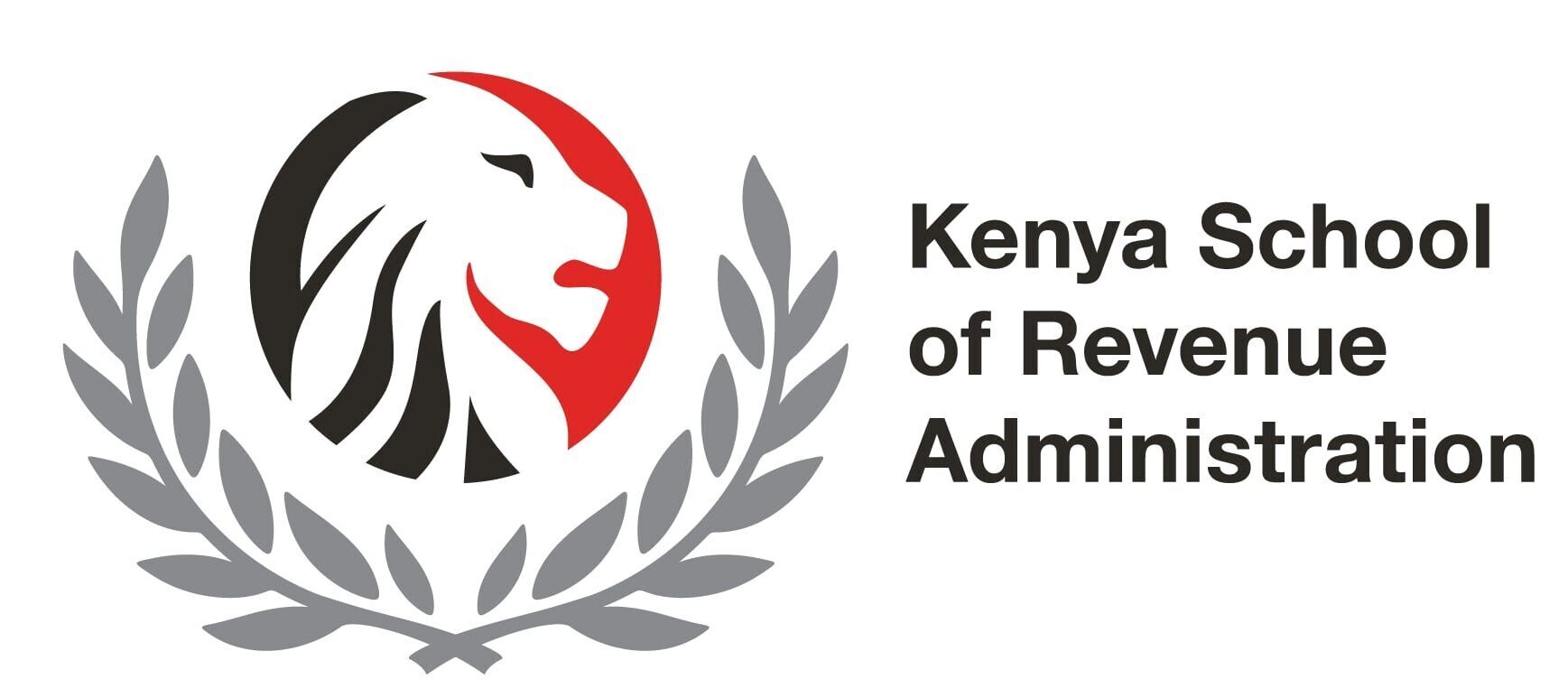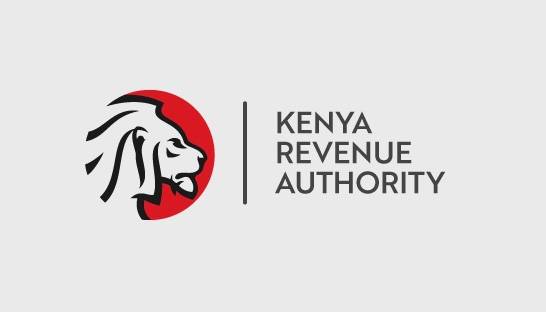- On or about the 16thJune, 2020 the Respondent sent a demand notice to the Appellant for the amount of Kshs. 54,097,685.00 being alleged tax due for underpayment of duty on imported raw materials.
JUDGEMENT
BACKGROUND
- The Appellant is a private company limited by shares and is duly incorporated under the Companies Act, 2015 within the Republic of Kenya. It is authorized to carry out various businesses including import of goods.
- The Respondent is a principal officer appointed under Section 13 of the Kenya Revenue Authority Act, Cap 469 of the Laws of Kenya. Under Section 5 (1) of the Act, the Kenya Revenue Authority as an agency of the Government is responsible for the assessment, collection, receipt and accounting for revenue in accordance with the specified laws.
- The Respondent conducted a post clearance audit on the Appellant in accordance with the provisions of Sections 235 and 236 of the East African Community Customs Management Act, 2004 (EACCMA), which allows the Respondent to inspect and verify correctness of documents presented for clearance of goods, up to five years after clearance.
- During the audit, the Respondent noted that its inspection and verification report had not been acted upon when the goods were being cleared. The
Respondent submits that during the inspection it noted that some of the imported goods had been misclassified leading to underpayment of duty.
- On or about the 16thJune, 2020 the Respondent sent a demand notice to the Appellant for the amount of Kshs. 54,097,685.00 being alleged tax due for underpayment of duty on imported raw materials.
- The Appellant objected and made an application for review of the amounts on 6thJuly 2020 as assessed and the parties negotiated and pointed out various discrepancies in the Respondent’s assessment of all the items.
- Subsequently, the Respondent on 25thAugust, 2020 issued a review decision confirming the original figure of Kshs. 54,097,685.00.
- The Respondent issued another demand notice on 3rdFebruary, 2021 with the threat of taking enforcement action including but not limited to issuing agency notices should the Appellant not make good its payment of the taxes demanded.
- Being aggrieved by the Respondent’s decision dated 27thAugust, 2020 the Appellant filed a notice of intention to appeal to the Tribunal.
THE APPEAL
- The Appeal herein is premised on the following grounds as contained in the Memorandum of Appeal dated 7thFebruary, 2021 and filed at the Tribunal on 8th May, 2021:-
- That the Respondent erred in law and fact in finding that the Appellant had underpaid Import Duty.
- That the Respondent erred in its construction and application of the law as relates to the computation of Import Duty, Value Added Tax and interest.
- That the Respondent erred in law and fact in re-classification of the consignments in question after verification and confirmation.
- That the Respondent erred in law and in fact in its decision to the effect that HS Code declared for aluminum raw material was wrong.
- That the Respondent acted unreasonably, capriciously and was motivated by malice and extraneous considerations in issuing the various tax demands.
- That the Respondent erred by acting ultra vires the law by failing to give proper guidance on the tariff identification in accordance with General Interpretive Rules (GIR).
- In view of the foregoing and as a consequence thereof, the Respondent’s demand for extra taxes from the Appellant in respect of’ Mis-declaration” is unjustified, unmerited and without any legal basis. Consequently, it is pleaded before the Tax Appeals Tribunal that the said demand for taxes on account of undervaluation of duty, be vacated and or set aside and the same be quashed accordingly.
- That it outrightly contravened the doctrine of legitimate expectation that rests a presumption on the Commissioner to follow certain procedures at arriving at the tax liability and the benefits that accrue from it.
- That the alleged claim of underpayment of Import Duty by the Respondent is inaccurate as the goods were lawfully cleared by the Respondent.
- The Appellant therefore prays that:-
- The Respondent’s review decision dated 25thAugust, 2020 be quashed and struck out in its entirety.
- The Respondent’s action to demand additional taxes despite logical and cogent explanations being given to it be declared arbitrary, capricious, unreasonable, unfair and contrary to the administration of justice and legitimate expectation of a tax payer, and that it should be set aside.
- The Respondent, its employees, agents/other persons purporting to act on its behalf be barred and or estopped from demanding or taking any further steps towards enforcement or recovery of principal tax, penalties and interest.
- The cost of this Appeal be awarded to the Appellant.
- Any other remedies that the Honourable Tribunal deems just and reasonable.
THE APPELLANT’S CASE
- The Appellant in it’s Statement of Facts dated 7thFebruary, 2021 and filed at the Tribunal on 8th May, 2021 argues, inter alia, as follows:-
- That the Respondent insisted that there was underpayment of duty at the time of importation, despite the obvious provisions of the law regarding the treatment of raw materials and semi-finished products.
- During the audit, the Respondent confirmed in their findings that the imports underwent the requisite verification and approval by the Respondent at the Port of Mombasa. This is the very core mandate of the Post Clearance Audit –
to confirm the very fact for which importation was declared and allowed as accurate.
- Be that as it may, even if the requirement existed, the Appellant had a legitimate expectation that with the lodgment of the import Declaration Form (IDF) and Imports Entries (C.17B), which clearly indicated the description of the goods as aluminum raw materials which in itself is an application subject to approval by the Proper Officer acting on behalf of the Commissioner of Customs, any objections and queries would have been raised.
- The Appellant states that it is only after these import documents are approved that an importer would proceed to make payment and obtain a clearance order to remove the goods from the port of import. The taxpayer is not made aware of any other form of application, and no such other application was required of the taxpayer by the Proper Officer of Customs at the time the IDF was approved.
- The Appellant clearly explained about the entries in question, that the Kenya tax regime is based on self-assessment and as such the Appellant lodged the required documents at the document processing center including the Import Declaration form, invoices, bills of lading and certificate of conformity as required under the single customs entry regime.
- The Appellant submits that this is unreasonable and un-proportional compared to the procedural infraction committed by it, if any, and the failure by the Proper Officer of Customs to execute his mandate as by law provided should not be visited on the Appellant. The Appellant asserts that there is no known basis in law for the demand for the additional tax.
- The Appellant submits that the Respondent was satisfied with the self assessment declaration and approved the importation of the aluminum raw
materials in question based on the information availed and there is no justification for an officer acting post facto to contend otherwise.
- The Respondent is therefore estopped from changing that position. The Post Clearance Audit is being undertaken post facto, after the Proper Officer has accepted the application.
- There is no basis for the Respondent to withdraw the acceptance/approva I given at the time of importation to import constituent parts. It is not reasonable that the Commissioner of Customs would want to withdraw the acceptance/approval many years later and impose further duties when the goods have already been sold.
- The Appellant claims that all through the Audit and the Objection, the Appellant submitted documentation which clearly indicated that an application, in the form and manner required at the time, being an approved import declaration form (IDF) and import entries (c.17B) was accepted in terms of Note 2 of part XVI of the EAC CET, 2017.
- The Appellant submits that the Respondent’s decision miserably fails the test of administrative action that is expeditious, efficient, lawful, reasonable and procedurally fair.
- The Appellant argues that the Respondent’s tax demand inaccurately seeks to attribute that the tax was intentionally under paid by the Appellant on an erroneous theory that the Respondent was unaware of a rather obvious procedure. It is unconscionable and irrational for the Respondent to demand taxes which exceeds the customs value of the said entries.
- The Appellant submits that the said approach is contrary to the Appellant’s Constitutional rights, Fair Administrative Action Act and rules of natural justice as it has selectively been applied to the Appellant. Applying the said
computation selectively effectively leads to unfair trade practices against the Appellant. The Respondent is therefore estopped from denying the Appellant the opportunity to consider the matter closed as it had paid full duty as approved by the Respondent.
- The Appellant has a legitimate expectation that tax issues should be handled fairly and the Fair Administrative Action Act demands that any person being the subject of a process be fully aware of what they are up against which was not the case here.
- The Appellant prays that the Honourable Tribunal grants the following orders:-
- A declaration that the Respondent’s t Review Decision dated 25th August, 2020 in respect of the Post Clearance Audit (PCA) findings is unjustified, unmerited and is without any legal basis and is therefore null and void.
- An order setting aside and or vacating the Respondent’s impugned decision.
- An order quashing the Respondent’s decision as contained in the letter dated 25thAugust, 2020
- An order for costs of the appeal to be paid to the Appellant by the Respondent.
RESPONDENT’S CASE
- The Respondent responded to the Appeal vide its Statement of Facts dated and filed on 4thJune, 2021 in which it argued, among other grounds, that its core mandate is the collection of revenue (including import duty) on behalf of the Government of Kenya.
- The Respondent claims that it acted within its mandate under Sections 236 and 237 of EACCMA which allows the Respondent to audit the Appellant up to five years after clearance. Further, under Section 135 of EACCMA, the Respondent is empowered to demand for taxes. In addition, the Appellant was provided with a schedule of the affected consignments in which the Respondent was charging extra taxes.
- The Respondent argues that none of its actions was acted outside its mandate and the law. Further, demanding additional taxes from the Appellant is a way in which the Respondent ensures that everyone pays their fair share of the taxes.
- The Respondent prayed that this Honourable Tribunal considers the case and finds as follows:-
- The Honourable Tribunal dismisses the Appeal.
- The Honourable Tribunal upholds the Respondent’s Objection Decision amounting to Kshs. 54,097,685.
- The Honourable Tribunal awards the Respondent with costs to the suit.
- The Respondent opposed the Appeal on the grounds set out in its Statement of Facts dated 4thJune, 2021 in which it averred inter alia as follows:-
- The Respondent conducted a post clearance audit on the Appellant in accordance with Sections 235 and 236 of the East African Community Customs Management Act, 2004 (EACCMA) which allows the Respondent to inspect and verify correctness of documents presented for clearance of goods up to five years after clearance.
- During the audit, the Respondent noted that the Appellant had underpaid Import Duty due to misclassified import goods. It was noted that the Appellant
had classified its goods as aluminium raw (unwrought aluminium) under the HS Code 7601.10.00 yet the goods the Appellant was importing was aluminium plates, sheets and strips which should be classified under the HS code 7606.91,00. The Respondent proceeded to demand additional taxes of Kshs. 54,097,685.00.
- On 23rdJune 2020, the Appellant wrote to the Respondent informing it that it used to import unwrought aluminium (aluminium raw material) but however stopped and started importing aluminium circles because of the high electricity cost of melting unwrought aluminium.
- The Respondent claims that this is a clear confession of the Appellant’s intentional misclassification of goods. Further, the Appellant provided photographic evidence to show that the imports were aluminum circles.
- Noting the photographic evidence given, the Appellant’s own confessionary letter and previous declarations made by the Appellant under HS Code 7606.91.00, the Respondent issued a demand for additional taxes. This is because HS Code 7601.10.00 does not attract duty, however, the correct classification is HS Code 7606.91.00 which attracts duty at the rate of 10%.
- Further, the additional VAT was computed on assessed import duty. Section 248 of EACCMA provides that where duty remains unpaid, it shall attract interest of 2% per month from the time of importation.
- The Respondent claims that the Appellant had wrongly re-classified the goods. It was clear from the evidence given that the Appellant had imported worked aluminium strips which should be classified under HS Code 7606.91.00.
- The Respondent noted that the Appellant had in three shipments, vide entry numbers 2019ICD78199, 20191CD84961 and 2019ICD84956 declared its goods under the HS Code 7601.10.00. The Respondent verified the goods and found that they were mis-declared. The goods were correctly classified and the Appellant paid the extra taxes. The Appellant was also guided on correct classification of its goods but intentionally wrongly classified it.
- The Respondent’s core mandate is the collection of revenue (including import duty) on behalf of the Government of Kenya. The Respondent acted within its mandate under Sections 236 and 237 of EACCMA which allows the Respondent to audit the Appellant up to five years after clearance. Further, under Section 135 of EACCMA, the Respondent is empowered to demand for taxes. In addition, the Appellant was provided with a schedule of the affected consignments in which the Respondent was charging extra taxes.
- The Respondent submits that the General Rules of Interpretation of Harmonized System (GIR) are a set of principles that govern the classification of goods in the nomenclature. Paragraph 6of the GIR provides that:-
“For legal purposes, the classification of goods in the subheadings of a heading shall be determined according to terms of those subheadings and any related Subheadings Notes… ”
- The Respondent was therefore guided by this rule and proceeded to check the HS Code, for the proper classification. The Respondent noted that in the HS Code, aluminium was classified under Chapter 76. Chapter Note 1 (d) to Chapter 76 stated that flat surfaced products (other than the unwrought a of heading 76.01) should be classified under Heading 7606.
- The Respondent, having verified that the goods imported were not aluminium raw materials (unwrought aluminium) proceeded to verify the correct HS Code in order to classify the goods.
- The Respondent averred that the distinct characteristic to determine whether the goods should be classified under HS Code 7601.10.00 or 7606.91.00 is whether the Appellant imported unwrought aluminium. The Appellant confirmed that it does not import unwrought aluminium, which was also confirmed by the Respondent’s verification. The correct classification was therefore HS Code 7606.91.00.
- The Respondent issued the Appellant with a demand for taxes. The Appellant is obligated by law to object within 30 days and provide valid grounds for the Respondent to review its demand. The Appellant failed to prove that the goods had been wrongly re-classified by the Respondent.
- The Respondent conducted a post clearance audit on the Appellant. A post clearance audit process is a structural examination, after Customs has released cargo. The purpose is to measure and improve the Appellant’s compliance. Post Clearance Audits (PCA) allow for better trade facilitation.
- Further, the practice is not peculiar to the Respondent as it is practiced world over and recommended by reputable organization such as the World Customs Organization (WCO).
ISSUES FOR DETERMINATION
- Having considered the arguments and having carefully looked at all the documents presented by the two parties, the Tribunal came up with one issue for determination thus:-
Whether the Respondent erred in classifying plates, sheets, strip and foil at HS 7606.91,00and not HS7601.10.00as classified by the Appellant. ?
ANALYSIS AND FINDINGS
- The Tribunal noted that the parties had entered into a Partial Consent which it shall record herein below before proceeding with the analysis.
PARTIAL CONSENT
- The Tribunal notes that the parties signed a Partial Consent dated 14th December, 2021 which reads as follows:-
“PURSUANT to the Alternative Dispute Resolution Agreement (the ADR Agreement) dated 3rd December 2021, the parties herein have by consent agreed to partially settle this matter under the following terms:
- THAT the assessments for twenty-one (21) entries amounting to 43,858,218.24 comprising of import duty of Kshs. 20,541,803.66, VAT of Kshs. 3,286,687.44and penalty of Kshs. 20,029,727.16shall be revised to NIL.
- THAT the assessments for five (5) entries amounting to 10,239,466.28 comprising of principal import duty of Kshs. 5,082,671.85, principal VAT of Kshs. 813,228.20and penalty of Kshs. 4,343,565.24 has been referred back to TAT for determination.
- THA Teach party shall bear its own costs. ”
The Partial Consent was signed by George N. Mbaye for the Appellant and Winnie Otieno for the Respondent.
- Following the Partial Consent signed between the two parties, the Tribunal will now focus its attention on item two (2) of the consent, namely:-
“2. That the assessment for five (5) entries amounting to Kshs.
10,239,466.28 comprising of principal import duty of Kshs. 5,082,671.85, principal VA T of Kshs. 813,228.20and penalty of Kshs 4,343,565.24has been referred back to TAT for determination. ”
Whether the Respondent erred in demanding additional revenue from the Appellant
- In its review decision ref HQ/FA/056/2019 dated 25thAugust 2020 the Respondent demanded from the Appellant Ksh 54,097,685.00 being import duty, VAT and penalties resulting from purported reclassification of imported goods from HS code7601 10 00 to 7606 91 00. Upon careful reading of the bundles submitted by both parties, the Tribunal determined that the dispute was not about tariff classification but whether the Appellant imported aluminium circles and whether proper duties were paid prior to clearance of goods.
- In its submissions, the Respondent stated that it decided to vacate part of the demand in respect of 21 entries which had been found that the imported goods had been properly classified. This resulted in a review of the amount demanded to Ksh 9,944,671.22.00. This amount was in respect of 5 import entries which the Appellant had declared the goods as unwrought aluminium raw materials classifiable under HS 7601 10 00 and which the Respondent argued that the goods imported were aluminium circles classifiable under HS
7606 91 00.
- The impugned entries were as follows:
| ENTRY NUMBER | TAXES & PENALTIES |
| 2016MSA5936967 | 2,230,738.54 |
| 2016MSA5907643 | 2,994,260.24 |
| 2017MSA6746856 | 1,208,435.20 |
| 2O191CD86333 | 1,782,528.06 |
| 2019ICD99108 | 1,728,709.18 |
| Total | 9,944,671.02 |
- As is the norm in proceedings before it, the Tribunal held the presumption that the Respondent was correct in its assessment unless the Appellant discharged its burden of proof that the assessment was wrong. This presumption is immortalized under Section 30 of the Tax Appeals Tribunal Act (2013) which provides that:
“a proceeding before the Tribunal, the appellant has the burden of proving —
- where an appeal relates to an assessment, that the assessment is excessive; or
- in any other case, that the tax decision should not have been made or should have been made differently. ”
- To support its case that the Respondent assessment was wrong, the Appellant submitted inspection and verification reports by the proper officers at the port
of entry where the goods were examined against the declarations by the Appellant prior to release. - The Tribunal summarized the verification reports as shown below:
| REPORT NO | ENTRY NO INSPECTION REMARKS |
| 2016MSA127509 | 2016MSA5936967 “Verified 1x20ft container….
Opened, found to container Aluminium raw material Aluminium/raw material (unwrought) Product Aluminium Circle. T1 Applies”. |
| 2016MSA9388511 | 2016MSA5907643 Examined 1x2Oft container…
Sampled and examined 61 packages found to contain as follows: .pressure cooker .wrought aluminium … Aluminium casting handles fir pots.. …Moulds for aluminium pots Checked against invoice and found declaration as to item description and quantity…. appear genuine |
| 2017MSA11324289 | 2017MSA6746856 | “Examined 1X20 Ft Container …
-Material wrought Aluminium qty 81 pcs. Aluminium casting handles Moulds for Aluminium pots |
| Checked invoice against IDF/plist and found declaration to tally as per item value, description and quantity^’…. | ||
| 2019MSA153285 | 2019ICD86333 | Partially verified 1X2Oft Container
Opened and found to contain Aluminium Circles Description and Tl Declared OK |
| 2019MSA154378 | 2019ICD99108 | …. Partially verified lX20ft container No… Opened and found to contain..
– Aluminium circle – Alloy/temper Description and Tl declared OK |
- Section 223(e) of the EACCMA in relation to certificates issued by customs states as follows:
“a copy, certified under the hand of the responsible officer of any declaration in any book or document required to be kept for the
purposes of the Customs laws shall be admissible in evidence and shall be prima facie evidence of such declaration and of the matters recorded in the book or document”.
- In view of the foregoing, the Tribunal found the inspection reports issued by the Respondent’s officers as admissible evidence of what the Respondent verified the Appellant’s imports to consist of. In its submissions the Respondent stated that it did not contest the reports.
- The Tribunal noted from other certificates submitted that where the Appellant had been found to have imported goods other than what was declared, the Respondent demanded additional duties prior to release.
- With Regard to the impugned entries, only entries Nos 20191CD86333 and 2019ICD99108 covered aluminium circles, the certificates show that the description in the Appellant’s declaration tallied with the physical verification and that the Tariff declaration was correct. That is to say the aluminium circles were declared in the correct Tariff. The physical Verification showed that the goods covered by those entries were not aluminium circles and had properly declared under the correct tariff headings for those goods.
- There was no indication that the Respondent conducted a post clearance verification of the goods imported by the Appellant. The Respondent did not devote any time in its submissions to show that the verification officers were reckless in their verification. In the absence of a post clearance verification report, the Tribunal can only conclude that the preclearance verification was correct and that the desk audit plucked product descriptions from the air.
- Noting that where the Respondent found that the wrong tariff classification was discovered during verification, the Respondent raised an offence report and the Appellant paid applicable duties prior to release of the goods, the
Tribunal was of the view that the Respondent should not come again and demand additional duties with total disregard of that fact. Furthermore, the Respondent did not contest its internal reports furnished by the Appellant indicating that the goods imported vide entry Nos 2016MSA5936967, 2016MSA5907643 and 2017MSA6746856 were not aluminium circles.
- The gist of the foregoing is that the Appeal has merit and therefore succeeds. FINAL DECISION
- On the basis of the foregoing analysis the Orders that recommend themselves to the Tribunal are as follows:-
- The Appeal be and is hereby partially allowed as relates to the issue left for determination by the Tribunal in the Consent recorded by the parties.
- The Respondents review decision dated 25thAugust 2020 be and is hereby set aside as to the extent of the unresolved issue in the Consent recorded by the parties.
- Each party to bear its costs.
DATED and DELIVERED atNAlROBI this 14th day of April, 2022.
Tribunal was of the view that the Respondent should not come again and demand additional duties with total disregard of that fact. Furthermore, the Respondent did not contest its internal reports furnished by the Appellant indicating that the goods imported vide entry Nos 2016MSA5936967, 2016MSA5907643 and 2017MSA6746856 were not aluminium circles.
- The gist of the foregoing is that the Appeal has merit and therefore succeeds. FINAL DECISION
- On the basis of the foregoing analysis the Orders that recommend themselves to the Tribunal are as follows:-
- The Appeal be and is hereby partially allowed as relates to the issue left for determination by the Tribunal in the Consent recorded by the parties.
- The Respondents review decision dated 25thAugust 2020 be and is hereby set aside as to the extent of the unresolved issue in the Consent recorded by the parties.
- Each party to bear its costs.
DATED and DELIVERED at NAIROBI this 14th day of April, 2022.








